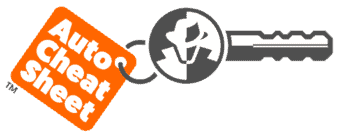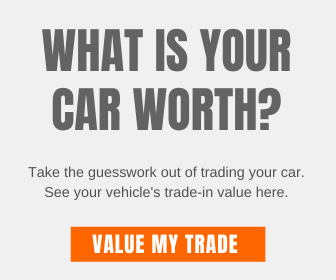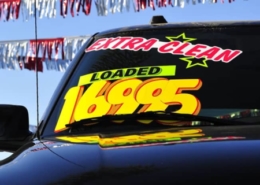How to Spot a Good Used Car: What to Check
Worried about buying a used car? Learn the key signs of a good one and shop with confidence!
What to Look For in a Reliable Used Car
Buying a used car can feel like walking a tightrope—each step balances excitement and dread. One moment, you’re on top of the world, congratulating yourself for nailing the deal of the century, and the next, you’re facing a repair bill so steep it leaves your stomach in knots.
It’s that tricky balance between feeling like you’ve outsmarted the dealership and realizing you’ve inherited someone else’s automotive headache. I’ve been there—through the highs of finding those hidden gems that drive like a dream and the lows of ending up with a car that can barely make it around the block.
Key Takeaways
- Exterior and Interior Condition: A clean, well-kept car shows it’s been cared for.
- Mechanical Soundness: The engine, transmission, and suspension should run smoothly with no odd noises.
- Service History: A clear maintenance record shows consistent care over the years.
But here’s the thing: it doesn’t have to be a gamble. With some know-how and a keen eye, you can easily spot the signs of a well-maintained used car. You don’t need to be a car expert—learn a few key things to look out for, and you’ll drive away in something that feels like a win, not a drain on your wallet. Let me guide you through how to avoid those common pitfalls and land a used car that runs like a champ without unexpected breakdowns.
Used Car Buying Tip: Finding a fair price for a used car can be tough these days, with many paying above retail. But don’t worry! You can still score a deal by getting a used car price quote and comparing local dealer offers.
What Makes a Used Car “Good”?
Let’s start with the basics. A good used car is like a good friend—reliable, uncomplicated, and not prone to surprise meltdowns at inconvenient times. It’s more than just having a flashy exterior; it’s about what’s under the hood and how well it’s been cared for.
So, how do you know if the car you’re eyeing is worth the plunge? You don’t need to be an auto mechanic to spot the major signs of a well-maintained used car. Let’s break it down.
RELATED: Used Car Buying Tips
1. First Impressions Matter: Inspecting the Exterior
We all know the saying: “Don’t judge a book by its cover.” But when it comes to cars, the cover says a lot. Start by walking around the car and looking for any apparent damage. I’m not talking about tiny nicks here or there; I mean significant dents, rust spots, or mismatched paint that suggest the car’s been in a significant accident.
Pay special attention to:
Rust and Paint Issues
A little surface rust is typical for older cars, especially in places where road salt is common. But structural rust—on the frame or around the wheel wells—is a deal breaker. Not only is it ugly, but it can also affect the car’s integrity over time.
Tires Tell a Tale
If the tires are bald or worn unevenly, this could indicate poor alignment or suspension issues, leading to costly repairs. Check for sidewall cracks; old tires can become brittle and are more likely to fail.
2. The Interior: More Than Just Looks
Once you’ve given the outside a good once-over, it’s time to climb inside and look closer. The condition of the interior can tell you a lot about how much care the previous owner put into maintaining the car. If someone couldn’t be bothered to clean the coffee stains out of the cup holder, do you think they kept up with oil changes?
Seat Wear and Tear
Seats take a lot of abuse, but excessive wear, tears, or sagging might indicate the car has higher mileage than what’s showing on the odometer. On the flip side, if the seats look pristine in an older vehicle, that might signal the previous owner took excellent care of the car.
Dashboard and Controls
Turn on the ignition and ensure all the lights, controls, and displays work correctly. A dashboard lit up like a Christmas tree is never a good sign. Make sure the air conditioning, radio, and windows operate smoothly. If something feels off, it might indicate more extensive electrical issues.
Recommended Used Car Shopping Sites
 RydeShopper will find used car clearance prices in your local area. Their extensive dealer network will assist you in locating your next used car. To optimize your savings, choose all of the dealerships in your area.
RydeShopper will find used car clearance prices in your local area. Their extensive dealer network will assist you in locating your next used car. To optimize your savings, choose all of the dealerships in your area.
 Edmunds is one of the Internet's oldest used car research and reviews sites. You're sure to find a good deal on a used car among the hundreds of thousands of vehicles listed online.
Edmunds is one of the Internet's oldest used car research and reviews sites. You're sure to find a good deal on a used car among the hundreds of thousands of vehicles listed online.
 MotorTrend is a division of MotorTrend Magazine and one of the best-kept price quote secrets on the Internet. They have dealer relationships all over the country. Use their simple car price quote service to find your next used car.
MotorTrend is a division of MotorTrend Magazine and one of the best-kept price quote secrets on the Internet. They have dealer relationships all over the country. Use their simple car price quote service to find your next used car.
 CarsDirect has been in operation for over a decade. Their search tool makes finding the exact car you're looking for simple. Simple search and navigation will assist you in narrowing down your options to the ideal vehicle.
CarsDirect has been in operation for over a decade. Their search tool makes finding the exact car you're looking for simple. Simple search and navigation will assist you in narrowing down your options to the ideal vehicle.
3. Mechanical Soundness: Under the Hood
Ah, the engine—the heart and soul of any car. A clean, well-organized engine bay can be a positive sign, but don’t be fooled by a shiny exterior. Sometimes, sellers will clean up the engine to hide underlying issues. Don’t be afraid to ask questions or bring a mechanic along if you’re unsure.
Fluids Check
Checking the car’s fluids is a quick and easy way to assess its mechanical health. The oil should be clean, not gritty, and the transmission fluid should be pinkish rather than dark brown. Low fluid levels might indicate neglect.
Engine Noises
Listen carefully when the engine starts. Does it turn over smoothly, or does it cough and sputter like it’s recovering from a bender? Any unusual knocking, hissing, or rattling sounds should raise a red flag. A smooth-running engine should purr like a content cat, not growl like it’s angry at the world.
4. Test Drive: Where the Rubber Meets the Road
There’s no better way to get a feel for a car than taking it out for a spin. Ideally, you want to test the vehicle in various driving conditions—city streets, highways, and, if possible, over a few bumps. This will give you an idea of how it handles and performs under stress.
Suspension and Brakes
Pay attention to how the car handles turns and stops during your drive. It may have suspension issues if the suspension feels bouncy or the car sways excessively. Brakes that squeal, grind, or feel spongy are a sign something’s not right.
Transmission Performance
Shifts should be smooth and without hesitation, regardless of whether the car has an automatic or manual transmission. If the car lurches, jerks, or delays during shifting, you could be in for expensive repairs.
Real-Time Bargain Hunting: Turn to Edmunds for instant access to the latest and greatest local deals, saving you time, money, and stress.
5. Checking the Service History: The Car’s Medical Records
A car’s service history is like its medical records. A complete, detailed record of regular oil changes, brake replacements, and other maintenance is a good sign that the previous owner took care of the vehicle. Be wary of cars without service records or huge gaps between services. It’s not uncommon for sellers to claim, “Oh, I did the maintenance myself,” but without documentation, you’re taking their word for it.
Accident Reports and Recalls
If the car has been in an accident, you’ll want to know about it. Minor fender-benders are usually no big deal, but if the vehicle has been in a serious crash, you’ll want to ensure it was correctly repaired. A vehicle history report, such as an AutoCheck, can also reveal if the car has any outstanding recalls.
6. Mileage: The Truth Behind the Numbers
You may have heard, “Mileage is just a number.” While that’s true to some extent, a car with higher mileage is more likely to need repairs sooner than one with lower mileage. Generally, a used car with 12,000 to 15,000 miles per year is considered average. If the car has significantly more than that, scrutinize its service history even more closely.
Low Mileage Isn’t Always Good
While a low-mileage car may seem like a better deal, it’s not always the case. Sometimes, cars that aren’t driven regularly can develop problems due to sitting idle. A vehicle that has been driven regularly but maintained well is often a safer bet than one that’s barely been touched.
7. Pricing: Is It Too Good to Be True?
Price plays a huge role in car-buying decisions. If the deal seems too good to be true, it probably is. Sometimes, sellers list cars at a low price to draw you in, but after closer inspection, you’ll find costly repairs or hidden damage. Make sure to compare the price to similar models on the market and understand whether the asking price is reasonable.
Negotiating Tips
Don’t be afraid to negotiate the price of a used car. If you’ve done your homework and know what similar cars are selling for, you can often talk the price down. Point out any issues you found during your inspection or test drive as leverage for a better deal.
FAQs
What should I look for in a used car engine?
The engine should start smoothly without unusual noises. Check the oil and transmission fluid for proper levels and cleanliness.
How can I tell if a car has been in an accident?
Look for mismatched paint or uneven gaps between panels. Run a vehicle history report to check for accidents.
Is it safe to buy a car without service records?
While it’s possible, it’s not advisable. Service records show whether the car was maintained regularly, and a lack of them could mean expensive repairs down the road.
What’s the most important thing to check on a test drive?
Pay attention to how the car handles, especially the brakes, suspension, and transmission. Any strange noises or vibrations could be signs of trouble.
How can I tell if a car has rust problems?
Surface rust is common in older cars, but structural rust can lead to costly repairs and safety concerns, especially on the frame or undercarriage.
Is a high-mileage car always a bad buy?
Not necessarily. A well-maintained, high-mileage car can be a better option than a low-mileage car that hasn’t been taken care of.
Conclusion: Signs of a Good Used Car
Buying a used car doesn’t have to be an anxiety-inducing process if you know what to look for. A little knowledge and a careful inspection can save you from ending up with a lemon. Focus on the exterior condition, mechanical performance, and service history to ensure you get a reliable vehicle.
When in doubt, take the car to a mechanic before finalizing your purchase. After all, it’s better to spend a little upfront than a lot on repairs later.















